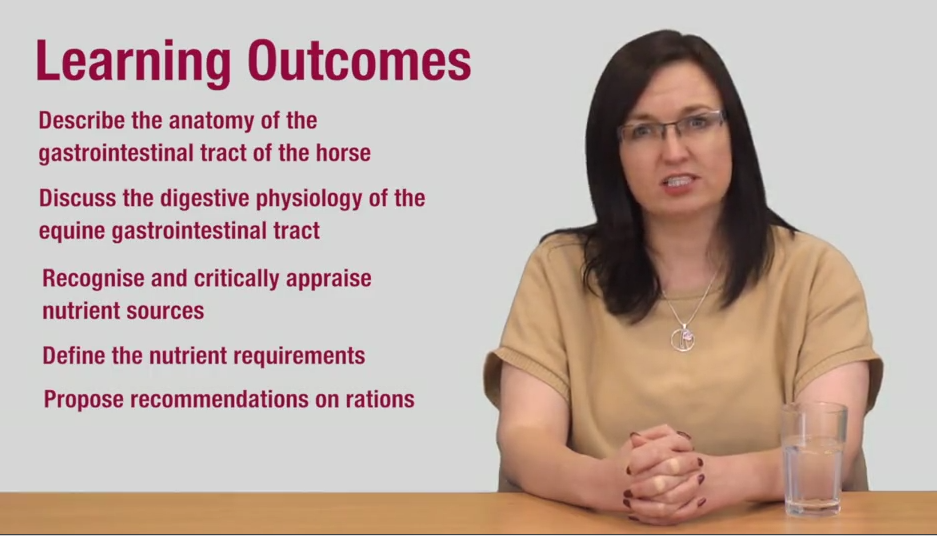University of Edinburgh pulls out all stops with online equine nutrition course
The equine nutrition course that I took online through the University of Edinburgh was excellent, and I have compiled all the information to share with you.
This course was a massive open online course, or MOOC, offered through the education site Coursera. It was free, but don’t let the price fool you. The University of Edinburgh pulled out all the stops.
Dr. Jo-Anne Murray
This was so well done that some of the students who took the course asked for the school to put up a link where they could donate money in appreciation, and people are being quite generous, according to the latest email we received.
The course was taught by Dr. Jo-Anne Murray, senior lecturer in animal husbandry and nutrition at the Royal (Dick) School of Veterinary Studies at the University of Edinburgh. Before the course started, she sent out an email welcoming us and mentioned that 260,000 students had signed up. I’m not sure if that was a typo. She said in a video mid-course that 23,000 were actually taking the class.
The course ran five weeks, and online students worked through a dashboard.
We watched two or three videos each week on our own. These were accompanied by a PDF that we could use to follow along for spellings and such. Once we went through the material, we took a review test for practice and then a real test.
There were several instructors involved in this, and they all monitored the forum that was provided. The idea was that we should learn on our own, but the instructors were very hands on and helpful. I’m sure they were ready to collapse once it was over, because horse people can be quite enthusiastic when it comes to forums.
After each week, the instructors posted another video on our dashboard to respond to trending topics and questions.
Once we had watched the material for Week 5, there was a final assessment test, which was challenging, even though it was open book.
I specifically asked in the forum how much of this material we could share with others. Dr. Murray said it was all open source. Share it all.
I downloaded all the videos because it was easier for me to play them on my software than through the dashboard. And I wrote down everything Dr. Murray said. I’ve included all the material I have.
Week 5 addresses laminitis a lot, but all weeks are relevant for understanding how a horse can get into trouble eating sugar and starches. For me, it’s just important to finally learn more about what and how horses should be eating.
However, now that I understand all this better, it makes me sadder that we are so ill-equipped to feed horses properly, given how their systems are designed to eat.
I was going to try to edit down my notes and present a summary, but there’s too much material. Just editing my notes to make sure you could read them took forever.
The one thing I do want to post here is this interesting tidbit. In Week 5, Dr. Murray discussed the idea of putting a horse on pasture only some of the time. Here’s the little problem she pointed out, and I had never read this:
“There have been studies done that when we remove horses or ponies from pastures for half a day, they will actually do compensatory eating. They can actually eat as much in 12 hours as they can in 24 hours if brought inside part of the time. There has been some work done that ponies can eat up to 40 percent of dry matter intake in a period of three hours. So, bringing them into a stable and then turning them out for limited periods may not be as effective as we think.”
I hope you get as much out of this as those of us who took the course did. I stand in awe of this team of equine nutrition instructors at the University of Edinburgh. We owe them big time.
